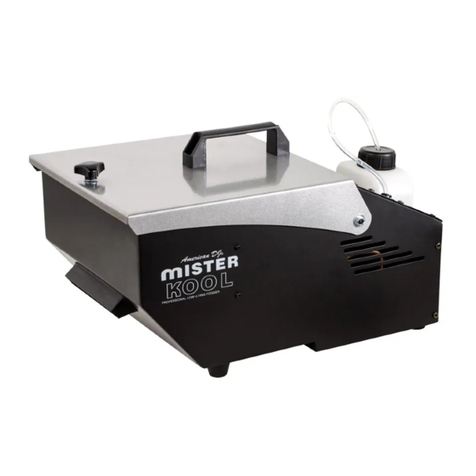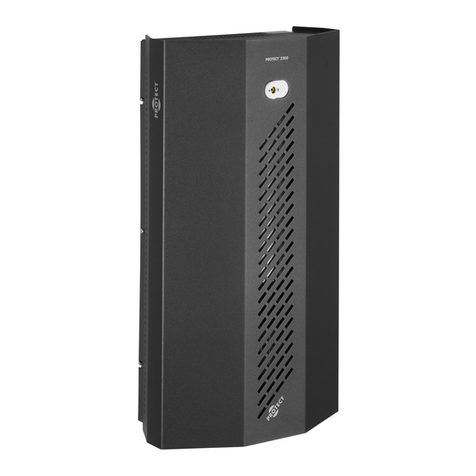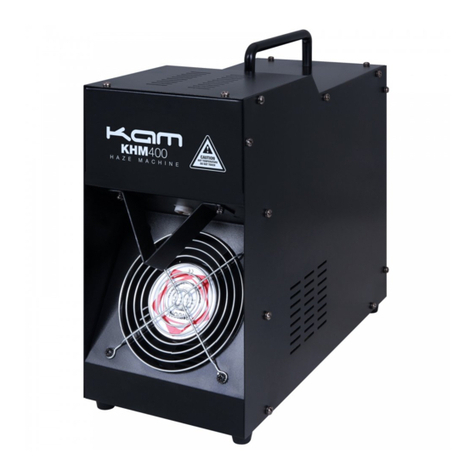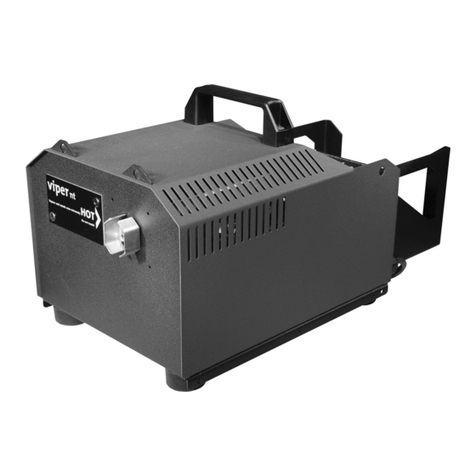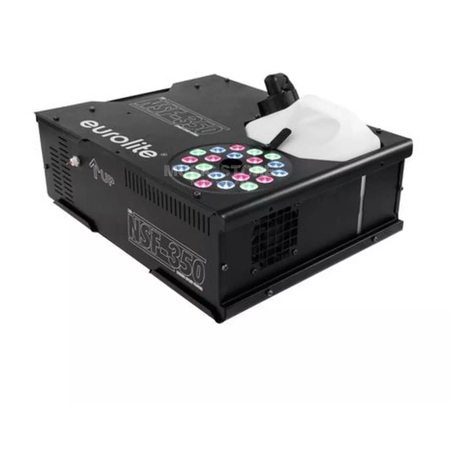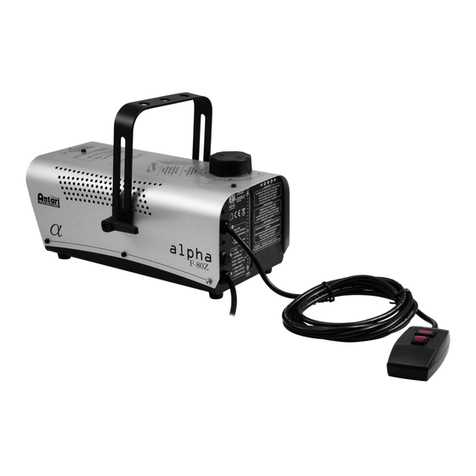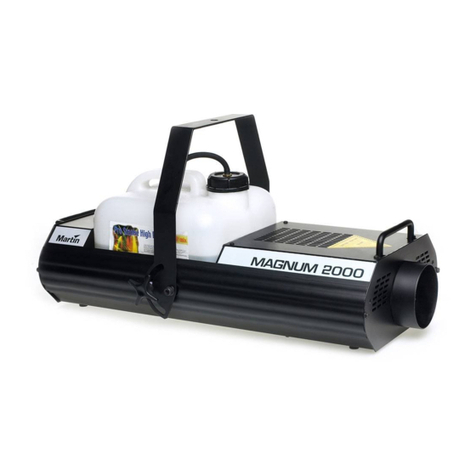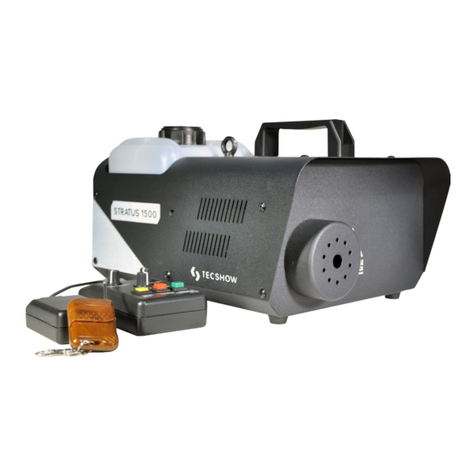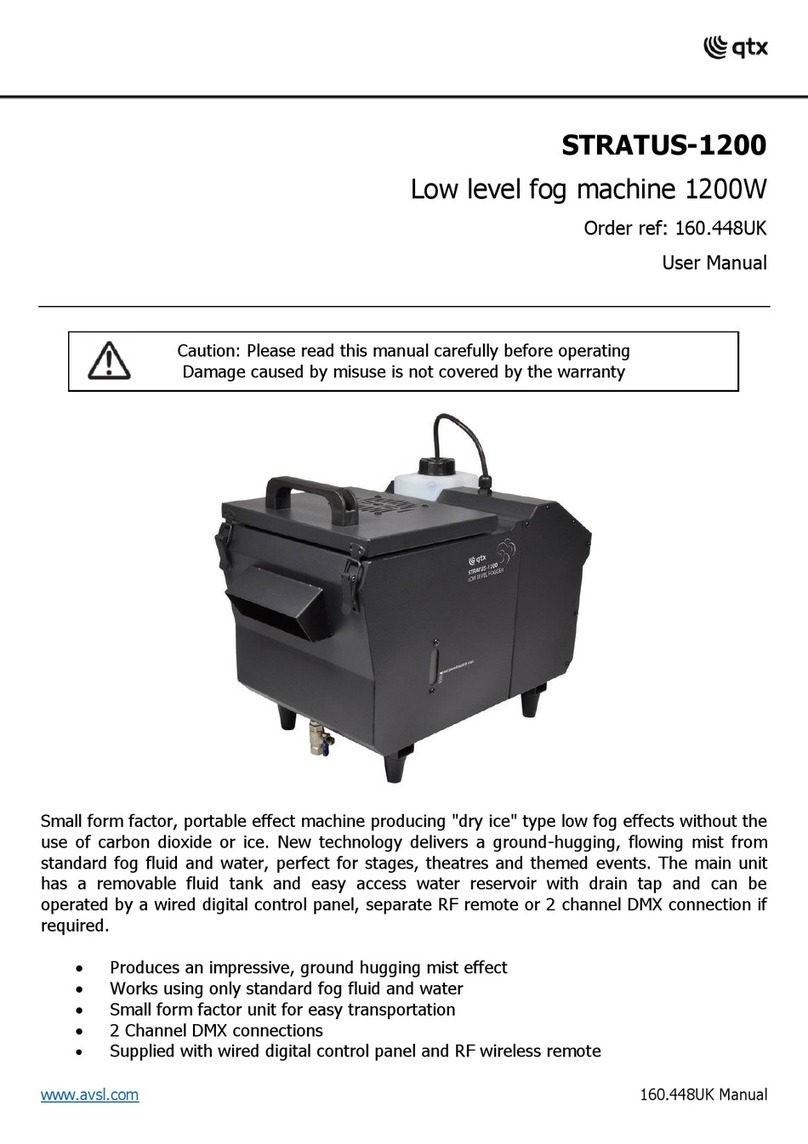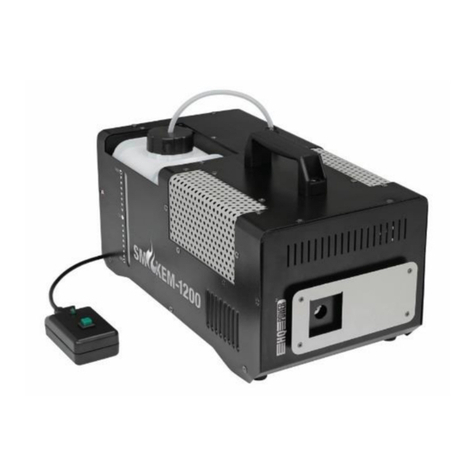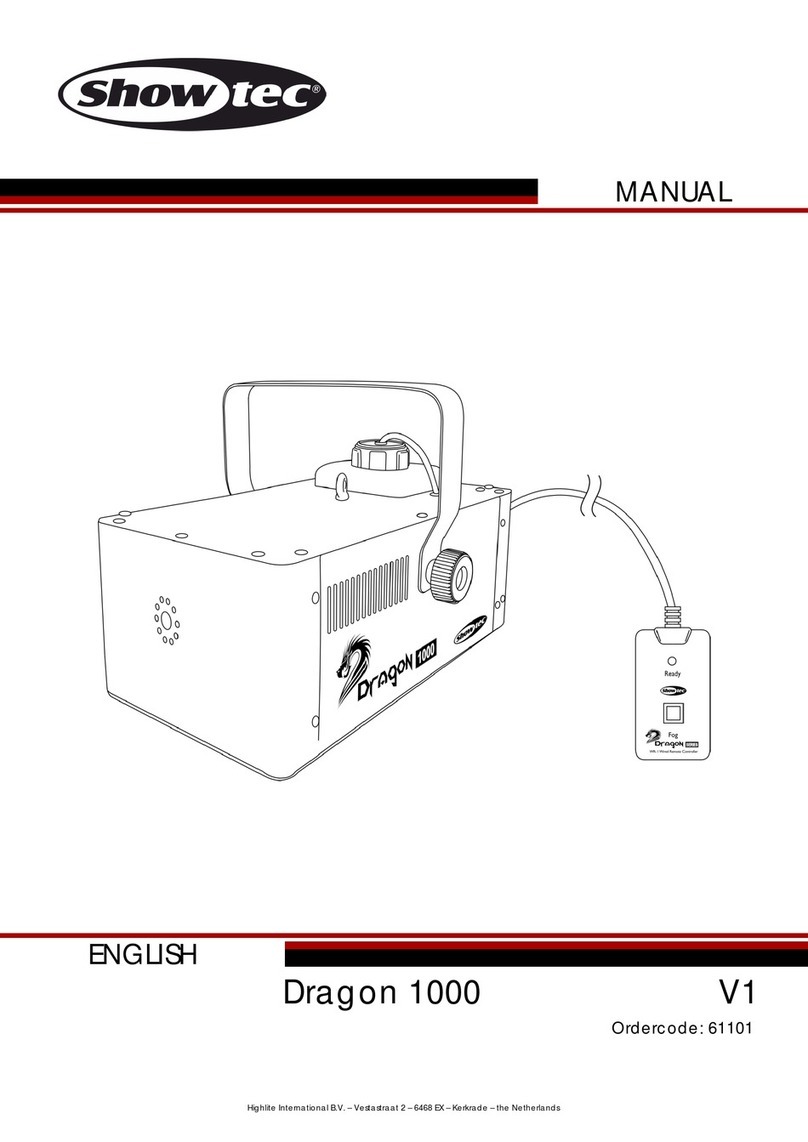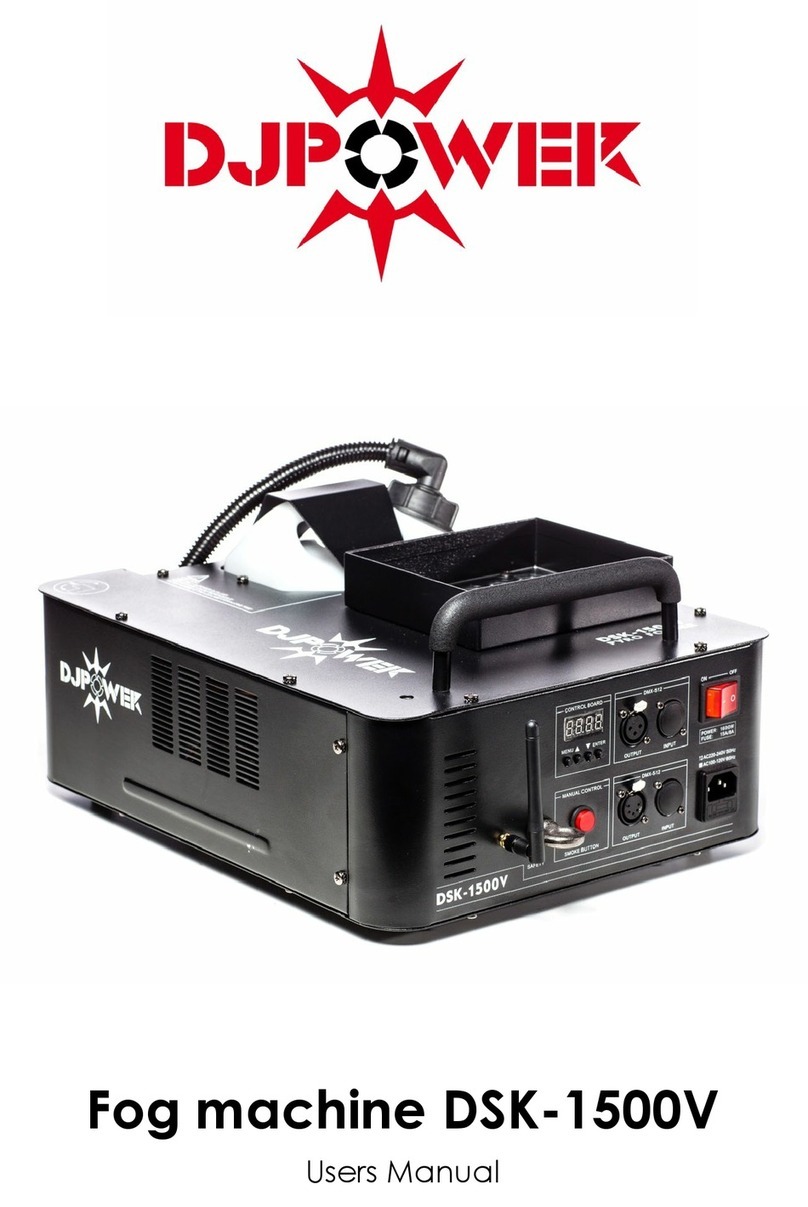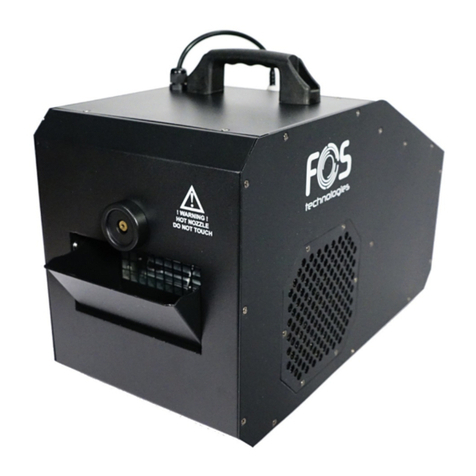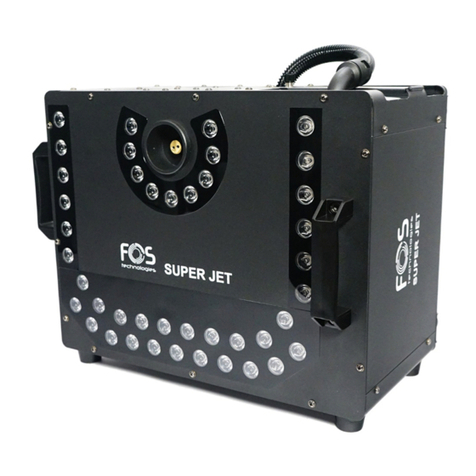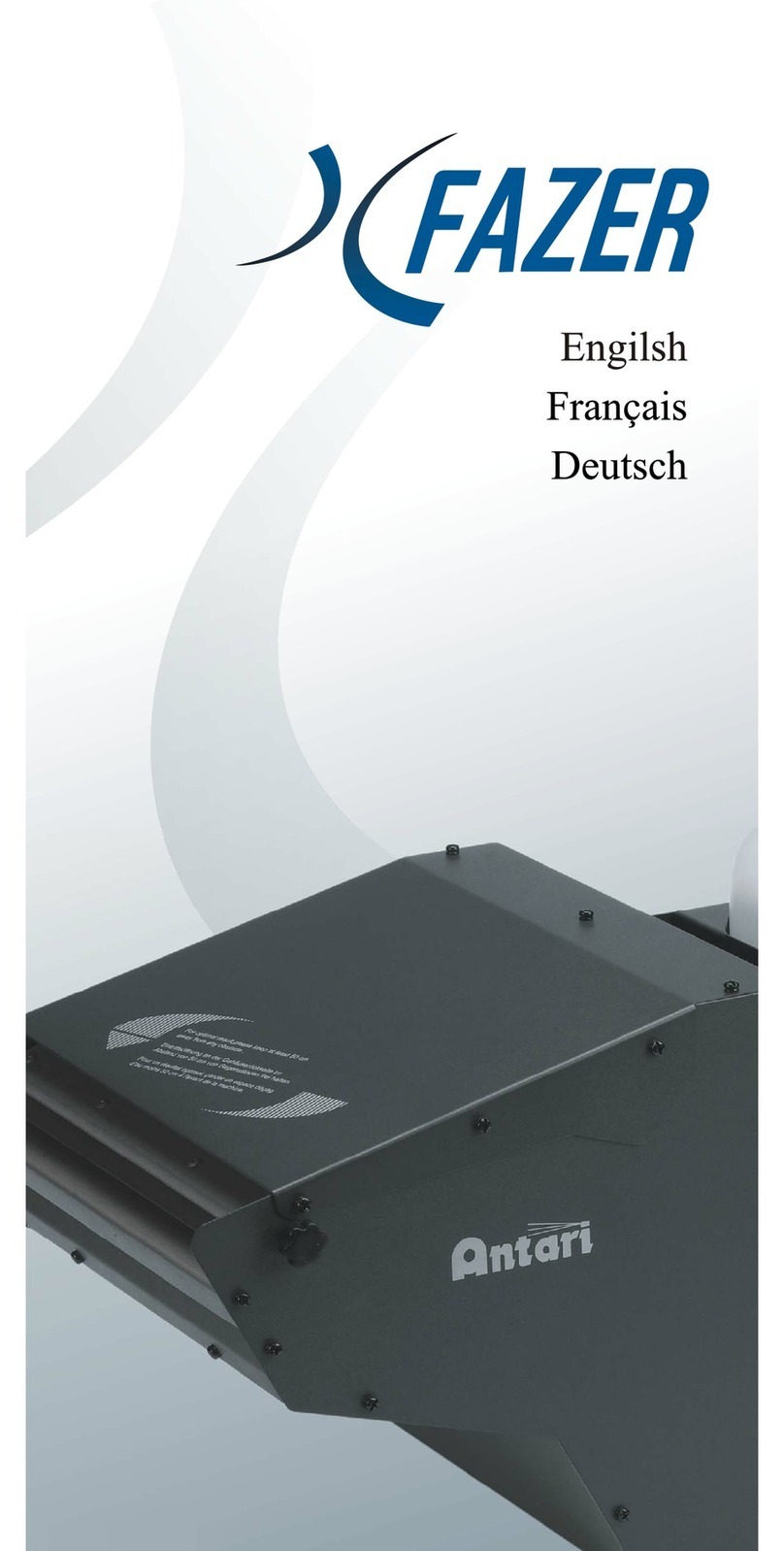Bask Mistmaster 3-in-1 Compact Misting System User manual

Bask Mistmaster®3-in-1 Compact Misting System: Mist Station Kit Instructions
v.210119 Page 2of 20
Table of Contents
What is a Mist Station?.........................................................................................................................................3
Design your Mist Station.......................................................................................................................................3
Mist Station Kits....................................................................................................................................................4
Key Features of Your Mistmaster..........................................................................................................................4
Riser Kit Contents..................................................................................................................................................5
Installing your Mist Station Riser Kit.....................................................................................................................8
Position Your Mistmaster and Risers ................................................................................................................8
Slim Riser (Copper)................................................................................................................................................9
Ultra-Slim Riser (316 Stainless Steel) ....................................................................................................................9
Typical Mist Station Configuration with Four Risers...........................................................................................10
Installing your Mist Station Overhead Kit...........................................................................................................12
Position Your Mistmaster and Overhead Mist Nozzles...................................................................................12
Test Your Mist Station.........................................................................................................................................13
Add Treatment to the Tank.................................................................................................................................14
Mistmaster Status Indicators Guide................................................................................................................15
Optional Long-Range Remote-Control................................................................................................................16
Pairing your Device .........................................................................................................................................16
Using your Long-Range Remote-Control ........................................................................................................16
Long-Range Remote-Control Status Indicators Guide ....................................................................................17
Appendix A: Purge the Pump..............................................................................................................................18
Appendix B: Fill the Tank.....................................................................................................................................19

Bask Mistmaster®3-in-1 Compact Misting System: Mist Station Kit Instructions
v.210119 Page 3of 20
What is a Mist Station?
A Mist Station is the non-transportable application of the Mistmaster®. A Mist Station is a semi-permanent installation
of mist nozzles that connect via nylon tubing to your Mistmaster to disperse mist over a fixed outdoor area (or multiple
areas) requiring frequent or repeated treatments such as your yard, garden, patio, or terrace and even used indoors for
sanitization or insect control when areas are free of people and pets (tool shed, workshop, etc.). Mist Stations use
Overhead Mist Nozzles or Risers (or both) to allow you to easily treat your predefined area(s) with just the push of a
button on your Bask Mistmaster or by use of its long-range remote-control—and to repeat the treatment as often as
you desire.
When used with natural or chemical treatments approved for use in your Bask Mistmaster®3-in-1 Compact Misting
System, your custom-installed Mist Station provides a simple, cost-effective, do-it-yourself method of reducing or
eliminating annoying problems like mosquitoes, spiders, fleas, ticks, and other pests, also used for sanitization, odor
control and plant health so you can spend more time enjoying the great outdoors.
For your convenience, Bask offers Mist Station Kits that contain everything you need to create your own customized
Mist Station for use with your Mistmaster. For additional information and answers to frequently asked questions, visit
www.bask-solutions.com.
GENERAL SAFETY INSTRUCTIONS
•For your safety and the safety of others, read, understand, and follow all warnings and
instructions herein and in the Bask Mistmaster® 3-in-1 Compact Misting System User’s Guide
BEFORE using your Mistmaster or accessories. For information on accessories and solutions,
visit www.bask-solutions.com.
WARNINGS
Use these accessories only for their intended use with your Bask Mistmaster®3-in-1 Compact
Misting System. Other use may cause fire, electrical shock, damage to the device, or injury to
persons, and will void any warranty by the manufacturer.
Do not allow children to operate your Mistmaster or its accessories; close supervision is necessary
when installing and operating these accessories near children.
Design your Mist Station
Mist Stations can be configured to fit any space using any combination of Overhead Mist Nozzle and Risers. First,
identify which kit(s) to order and determine whether you need any additional parts to customize your Mist Station to
your space. Then follow the simple step-by-step Mist Station Kit Instructions below for installing your custom Mist
Station.

Bask Mistmaster®3-in-1 Compact Misting System: Mist Station Kit Instructions
v.210119 Page 4of 20
Mist Station Kits
Bask Mist Station Kits contain Bask’s most popular products, packaged for your convenience and priced to save you
money. Each Mist Station Kit contains four mist nozzles, mounting hardware, and tubing to connect each Mist Nozzle
with your device.
•Riser Kits (with Slim or Ultra-Slim Risers) are designed for elevating Mist Nozzles approximately 24-inches (~61
cm) above ground. Each Riser is held in place using a base staked into the ground.
•Overhead Kits are designed for mounting Mist Nozzles to existing elevated structures, such as walls, soffits,
eaves, fences, or trees.
Kits can be configured to work together to create one or more customized mist stations that you can operate remotely
using your Bask Mistmaster Mist Button or Long-Range Remote-Control. Additional individual Risers, Overhead Mist
Nozzles, and mounting hardware can be purchased separately to expand a mist station’s treatment coverage area or
add additional stations where needed.
Mist Station Kits are accessories designed solely for use with the Bask Mistmaster®3-in-1 Compact Misting System. For
information about the function of each feature, refer to your Bask Mistmaster®3-in-1 Compact Misting System User’s
Guide.
Key Features of Your Mistmaster
1. Fill Cap
2. Vent
3. Handle
4. Mist Button
5. Status Indicators
6. Strap Loops (2)
7. Mist Nozzles (4)
8. Flapper
9. Selector
10. Control Panel
11. Auxiliary Output
12. Fuse Holder Cap
13. Fuse (Not Shown)
14. Charge Port
15. Power Button
16. Mix Button
17. Air Intake Holes
18. Battery Charger
19. Shoulder Strap
Mistmaster ®
3-in-1 Compact Misting System

Bask Mistmaster®3-in-1 Compact Misting System: Mist Station Kit Instructions
v.210119 Page 5of 20
Riser Kit Contents
A. Risers (4), 24-inch (~61 cm), each with a dripless Mist Nozzle; two styles are available:
•Slim Risers –made from ½-inch (~12.7 mm) Copper that will patina naturally over time. Each Slim Riser is
plumbed with nylon tubing and a push-to-connect Tee for easy installation.
•Ultra-Slim Risers –made from ¼-inch (~6.5 mm) Grade 316 Stainless Steel that maintains its shiny
silver color for a more modern appearance. Each Ultra-Slim Riser is plumbed to a push-to-connect
Tee for easy installation.
B. Bases (4) –pre-assembled with galvanized stake (straight Base for each Slim Riser; Tee Base for each
Ultra Slim Riser)
C. End Plug
D. Quick Disconnect
E. Tube Cutter
F. Tubing, 50 ft (~15.2 m) black, nylon
G. Mist Station Kit instructions
Slim Riser Kit Ultra Slim Riser Kit

Bask Mistmaster®3-in-1 Compact Misting System: Mist Station Kit Instructions
v.210119 Page 6of 20
Overhead Kit Contents
A. Tees (4) with dripless Mist Nozzles
B. Large Hardware Clips (10) (for mounting Tees)
C. End Plug
D. Quick Disconnect
E. Tube Cutter
F. Tubing, 50 ft (~15.2 m) black, nylon
G. Screws (20), stainless steel
H. Small Hardware Clips (10) (for mounting Tubing)
I. Mist Station Kit Instructions
Additional parts and accessories are available at www.bask-solutions.com.
Overhead Kit

Bask Mistmaster®3-in-1 Compact Misting System: Mist Station Kit Instructions
v.210119 Page 7of 20
CAUTION
•Although your Mistmaster is both rugged and weather‐resistant for outdoor use, its Battery Charger
(18) is rated for indoor use. It is important to keep its Battery Charger (18) dry and the Mistmaster is
in a controlled environment.
•Do not expose your Mistmaster to freezing temperatures. When using your Mistmaster in areas
prone to freezing temperatures, keep the device indoors (e.g., in a temperature-controlled garage)
and plugged into its Battery Charger (18).
•If nylon tubing is exposed to freezing temperatures, check the tubing for cracks and leaks prior to
operating your Mist Station.
•If used in areas experiencing freezing temperatures, winterize fluid tubing by draining or blowing
fluids out.
•Observe all safety precautions and warnings listed in the “Flushing the Tank” procedure.
WARNING
Do not operate your Mistmaster or its charger when the ambient temperature is higher than 40°C
(104°F).

Bask Mistmaster®3-in-1 Compact Misting System: Mist Station Kit Instructions
v.210119 Page 8of 20
Installing your Mist Station Riser Kit
Bask Risers are designed for ground installation approximately 8 to 10 feet (~2.4 to 3.1 meters) apart along the
perimeter of your desired coverage area, such as along hedges* or tree lines, or on landscape islands. Each Riser
elevates a Mist Nozzle to approximately 24 inches (~61 cm) above the ground, allowing your Mistmaster to propel mist
upward to treat the surrounding area.
*45° angle adapters also available.
Unless otherwise specified, instructions apply to installation of either Slim Risers or Ultra-Slim Risers.
Position Your Mistmaster and Risers
1. Evaluate the area you intend to treat and determine the best location for your Mistmaster device depending on
your expected use, insect control, sanitization, odor control or plant health.
•Position your Mistmaster where it can remain connected to its Battery Charger (18) and plugged into an AC
power source during stationary use and both kept in a dry, controlled environment. Always disconnect
charger prior to transportable use. Use only the charger and charger extender offered by Bask.
•Bask recommends positioning your Mistmaster in an area that is easily accessible, ensuring that it does not
block walkways or create a tripping hazard.
2. Determine the best location for each Riser. For best results, position Risers approximately 8 to 10 feet (~2.4 to 3.1
meters) apart along the outside perimeter of your desired coverage area.
•Use care to ensure mist does not drift to neighboring properties and does not adversely impact furniture,
landscaping, pools or fountains, and other structures.
•Bask recommends positioning Risers along hedges*, tree lines, or on landscape islands where there are no
existing structures on which to mount Overhead Mist Nozzles.
*45° angle adapters also available.
•Do not position Risers or lay Tubing in areas where they may be damaged by lawn mowers or motor
vehicles, or where they create a tripping hazard.
3. Using the Stakes provided in your kit, mount each Base (for Slim Risers) or Tee Base (for Ultra-Slim Risers) to the
ground surface using a hammer or mallet to gently drive the Stake through the Base or Tee Base and into the
ground as illustrated below. Ensure each Base or Tee Base maintains a vertical position. Never hammer on the
riser!

Bask Mistmaster®3-in-1 Compact Misting System: Mist Station Kit Instructions
v.210119 Page 9of 20
4. Mount each Riser to its base. For Slim Risers, push the bottom of the copper pipe onto the Base. For Ultra-Slim
Risers, push the riser body into the Tee.
5. Using the 50-feet of Tubing provided in your kit, run the Tubing along the ground beginning at your Mistmaster and
continuing to each Riser. Leave enough slack so the Tubing lies flat on the ground without pulling on the Risers; do
not allow Tubing to create loops or kinks. See illustrations of a typical Mist Station Riser Kit installations below.
Slim Riser (Copper)
Ultra-Slim Riser (316 Stainless Steel)
Each Slim Riser is preassembled with a Mist
Nozzle and Tubing running from the Mist Nozzle
through the Riser Body and extending out
through the side at the bottom; a Tee is
connected to the end of the Tubing.
Each Ultra-Slim Riser is preassembled with a Mist
Nozzle and a Tee at the bottom of the stainless-
steel pipe.

Bask Mistmaster®3-in-1 Compact Misting System: Mist Station Kit Instructions
v.210119 Page 10 of 20
Cut and Connect Tubing with your Mistmaster in its stationary location
6. On your Mistmaster, rotate the Selector (9) to the Auxiliary Output (11) position with the Selector’s arrow pointing
down and the Auxiliary Output (11) exposed.
7. Connect the Mist Station’s Quick Disconnect (D) to your Mistmaster device by pulling back on the sleeve while
pushing the body onto the Auxiliary Output (11) on your Mistmaster’s Control Panel (10). While pushing in firmly,
release the sleeve around the opening of the Quick Disconnect (D) so it locks into place. Pull gently on the body to
assure the connection is secure.
Typical Mist Station Configuration with Four Risers
The illustration above shows a typical installation of a Riser Kit with each Riser spaced approximately 8 to 10
feet (~2.4 to 3.1 meters) apart. You can adjust the positions of the Risers to fit your treatment area. If you wish
to treat a larger space, visit www.bask-solutions.com to purchase additional Risers and Tubing and customize
your configuration.
You can also add Overhead Mist Nozzle as described later in these instructions. When you are satisfied with the
configuration of your Mist Station, continue to the Cut and Connect Tubing instructions. The illustrations below
provide details for each type of Riser.
Slim Riser Configuration
Ultra-Slim Riser Configuration

Bask Mistmaster®3-in-1 Compact Misting System: Mist Station Kit Instructions
v.210119 Page 11 of 20
Pull back on the Quick Disconnect’s (D) sleeve
while pushing onto the auxiliary output.
Pull back on the Quick disconnect’s (D)
body to disengage.
Insert tubing by holding the body of the Quick
Disconnect (D) and pushing the tubing into the
push to connect end.
Auxiliary Output / Quick Disconnect
8. Using the end of the 50 feet of Tubing nearest to your Mistmaster (after completing step 6 above), insert the end
of the Tubing into the Quick Disconnect (D). Push the Tubing firmly into the Quick Disconnect (D) and then pull
gently on the tubing to ensure it is secured.
Push to Connect / Disconnect
9. Ensuring that the Tubing between your Mistmaster and the first Riser lies flat on the ground without looping or
bending; avoid rough or sharp surfaces (e.g., rocks) that can create abrasion and damage the tubing. Cut the Tubing
to the proper length using the Tube Cutter provided, ensuring that the cut is straight and does not cause the Tubing
to crimp, bend or be distorted.
10. Align the Tee at the bottom of the first Riser so that one connector points toward your Mistmaster; then insert the
end of the Tubing extending from your Mistmaster into the Tee connector. Push in firmly and then pull gently to
ensure it is secure.
11. Insert the open end of the remaining Tubing (what remains of th 50-feet piece) into the other side of the Tee at the
bottom of first Riser. Push in firmly and then pull gently to ensure it is secure.
12. Follow the same process (steps 10-12) to connect Tubing between the remaining Risers (and/or Overhead Mist
Nozzles if applicable; see INSTALLING YOUR MIST STATION OVERHEAD KIT later in these instructions).
Release the tubing by pulling the ring of the push
to connect on the Quick Disconnect (D) and pulling
the tubing away.

Bask Mistmaster®3-in-1 Compact Misting System: Mist Station Kit Instructions
v.210119 Page 12 of 20
13. Insert the End Plug into the open end of the Tee extending from the last Riser (or Overhead Mist Nozzle if
applicable) to terminate the run.
Installing your Mist Station Overhead Kit
Bask Overhead Mist Nozzles are designed to be mounted high up in existing structures like eaves, trees, or fences,
allowing you to remotely mist outward to treat a fixed area as often as you choose.
Position Your Mistmaster and Overhead Mist Nozzles
1. Evaluate the area you intend to treat repeatedly and determine the best location for your Mistmaster and charge
to protect them from the elements.
•When possible, position your Mistmaster where it can remain connected to its Battery Charger (18) and
plugged into an AC power source during use. Use only the charger and extension cords provided by Bask.
•Bask recommends positioning your Mistmaster along an area that is easily accessible, ensuring that it does
not block walkways or create a tripping hazard.
2. Determine the best location for each Overhead Mist Nozzle. For best results, position Overhead Mist Nozzles
approximately 8 to 10 feet (~2.4 to 3.1 meters) apart along existing elevated structures, such as walls, soffits,
eaves, fences, or trees. Better coverage is created by higher nozzles.
•Use care to ensure mist does not drift to neighboring properties and does not adversely impact furniture,
landscaping, pools or fountains, and other structures.
•Do not position Overhead Mist Nozzles in areas where connected Tubing may be damaged by lawn
mowers or motor vehicles, or where they create a tripping hazard.
3. Overhead Mist Nozzle assemblies are held in place by the large hardware clips and stainless screws provided in
your kit. Depending on your mounting surface, you may need to pre-drill holes:
•Wood structures generally do not require pre-drilled holes or plastic anchors; however, if the wood is thin or
weak, additional reinforcement may be required. Avoid screwing into trees or other potentially fragile
surfaces; Plastic zip ties may be a substitute for mounting overhead nozzles to certain types of surfaces.
•Metal structures require pre-drilled holes for a #8 screw spaced apart approximately 7/8 inches (22 mm) for
each Mist Nozzle tee.
•Concrete surfaces require pre-drilled holes for #8 plastic anchors placed approximately 7/8 inches (22 mm)
apart using the #8 screws provided in your kit.

Bask Mistmaster®3-in-1 Compact Misting System: Mist Station Kit Instructions
v.210119 Page 13 of 20
Two Large Hardware Clips may be used to mount a Tee directly to a structure. Wrap the Large Hardware
Clips around the Tee, one on each side of the Mist Nozzle. Insert the screw through the hole on both ends of
the Large Hardware Clip and screw in tightly, ensuring that the Mist Nozzle is pointing in the desired
direction.
Test Your Mist Station
1. Before using your Mist Station, test it for leaks by filling your Mistmaster tank with potable water; DO NOT ADD
ANY TREATMENT SOLUTIONS UNTIL AFTER YOU HAVE TESTED YOUR MIST STATION when possible.
2. Ensure that your Mistmaster battery is fully charged and that your Mistmaster is connected to your Mist Station
Tubing through the Quick Disconnect (D).
3. Press the Power Button (15) to power ON your Mistmaster.
4. If you have not yet purged the pump, follow the Purge the Pump instructions in your Bask Mistmaster®3-in-1
Compact Misting System User’s Guide (see Appendix A of these Instructions).
5. Test your Mist Station by pressing and holding the Mist Button (4) located on the Mistmaster Handle (3). Pressure
from your Mistmaster’s internal pump will force fluid from the tank though the Auxiliary Output (11), through the
nylon Tubing connecting each of the Risers and/or Overhead Mist Nozzles in your Mist Station. Continue to press
and hold the Mist Button (4) until observing mist emerging from the Mist Nozzles until air is no longer heard
escaping through the nozzles.

Bask Mistmaster®3-in-1 Compact Misting System: Mist Station Kit Instructions
v.210119 Page 14 of 20
Troubleshooting a Mist Station
If one or more Mist Nozzles in your Mist Station fail to emit mist after 1 minute of testing, check the
connections at each Tee to ensure Tubing is secure. If water is leaking at a point of connection, remove the
Tubing from the Tee, ensure the tube end is round and reinsert by pushing the end of the Tubing firmly
into the connector and then pulling gently to ensure it is secure. If the end of the Tubing is crooked or has
a jagged edge, recut a small piece off of the end, ensuring that the cut is straight and smooth and does not
cause the Tubing to crimp, bend or distort. Reconnect the Tubing by pushing the end firmly into the
connector and then pulling gently to ensure it is secure. Test your Mist Station again.
If your Mistmaster pump fails to exert sufficient pressure to force water through your entire Mist Station
(i.e., all the way to the last Mist Nozzle), you may need to purge the pump. Your Mistmaster contains an
internal self‐priming pump that enables high pressure to disperse a fine mist of any solution offered by
Bask. When using your Mistmaster for the first time, you will need to purge air from the pump. Properly
purging air from the pump will allow your Mistmaster to function at the maximum pressure necessary for
optimal performance. Repeat the Purge the Pump instructions in your Bask Mistmaster®3-in-1 Compact
Misting System User’s Guide. Never purge the pump with less than half a tank of fluid, as indicated by two
or more Status Indicators (5).
If, after assembling your Mist Station, you find you have too much slack in the Tubing between Mist
Nozzles, simply disconnect the Tubing from the Tee, cut off the excess Tubing using the Tube Cutter
provided, and reinsert the end back into the Tee.
If, after assembling your Mist Station, you find you do not have enough Tubing between Mist Nozzles,
replace that section of Tubing with a longer piece. Additional Tubing is available at www.bask-
solutions.com.
Add Treatment to the Tank
1. When your Mist Station is set up and all Mist Nozzles are functioning properly (emitting mist), either continue
misting (if tank has treatment) or add treatment and fill if needed. You can determine the tank level either by
reading the level indicator on your Bask Mistmaster Long-Range Remote-Control (described later in these
instructions) or by checking the Status Indicators (5) on the top of your Mistmaster.

Bask Mistmaster®3-in-1 Compact Misting System: Mist Station Kit Instructions
v.210119 Page 15 of 20
Mistmaster Status Indicators Guide
The three Status Indicators (5) on the top of your Mistmaster indicate the approximate level of fluid in the tank as well
as other feedback.
Tank Level Upper Half: When the two outer indicators are lit and steady, your tank fluid level is
between medium and high.
Tank Level Lower Half: When the middle indicator is lit and steady, your tank fluid level is between
low and medium.
Low Fluid: When all three indicators begin to flash, your Mistmaster is shut down due to low
fluid. You will need to refill the device to continue using it.
Low Battery: When the two outer indicators begin to flash, your Mistmaster is shut down due
to low battery. You will need to charge the device to continue using it.
Low Temp: When the middle indicator begins to flash, your Mistmaster is shut down due to
freezing temperatures. You will need to bring device into an environment that is above
freezing temperature immediately to prevent damage.
2. When your Mistmaster tank is approximately halfway filled with clean, potable water, continue with the Fill the
Tank instructions in your Bask Mistmaster®3-in-1 Compact Misting System User’s Guide (see Appendix A of these
Instructions). The Fill the Tank instructions guide you through the process of mixing a treatment designed
specifically for your intended use. Bask offers a variety of natural and chemical treatments that are premeasured
and packaged for use in your Mistmaster. For information about specific products and uses, or to purchase natural
or chemical treatments, visit us online at www.bask-solutions.com. See the USE OF TREATMENTS section of your
Bask Mistmaster®3-in-1 Compact Misting System User’s Guide for more information about your responsibilities
when using misting natural or chemical treatments.
WARNING
Be mindful of mist drift and ensure nozzles are placed in a manner that allows mist to settle on the
intended treatment area and avoid using in high wind conditions. Avoid misting swimming pools or
sensitive ground surfaces, furniture, or equipment.

Bask Mistmaster®3-in-1 Compact Misting System: Mist Station Kit Instructions
v.210119 Page 16 of 20
Optional Long-Range Remote-Control
A Bask Long-Range Remote-Control is available to allow easier control of your Mist Station.
Pairing your Device
Your Long-Range Remote-Control is intended for use with the Bask Mistmaster®3-in-1 Compact Misting System. To pair
your Long-Range Remote-Control with your Mistmaster, follow the instruction below.
1. Ensure your Mistmaster is powered ON.
2. Press and continue to hold the Mix Button (16) followed by the Mist Button (4) on your Mistmaster.
3. Once the lights on the Mist Button (4), Power Button (15) and Status Indicators (5) turn off, release both
buttons. Your Mistmaster is now in pairing mode. Your Mistmaster will remain in pairing mode for 20 seconds.
4. Press and hold the Remote Button (C) until all the lights on the Mistmaster and Remote turn back on.
5. Your Remote-Control Status Indicators (B) and Mistmaster Status Indicators (5) will display the following result
if pairing was successful:
The two outer indicators and the middle indicator begin to flash in alternating sequence. Your
Long-Range Remote-Control is now paired to your Mistmaster.
Unsuccessful Pairing: If pairing was unsuccessful, your Mistmaster’s lights will illuminate after 20 seconds, but the
Status Indicators (5) will not display the success sequence. Repeat steps 2-4 to try again.
Using your Long-Range Remote-Control
1. Wake the Mistmaster
Press the Remote Button (C) once to wake the unit. The Status Indicators (B) will cycle back and forth for a moment
followed by a display representing the tanks fluid level (or Mistmaster condition code) –See Remote-Control Status
Indicators Guide in this document
2. Set a Time
15 seconds: press the Remote Button (C) to request a 15 second run time (1 Indicator (B) will illuminate).
30 seconds: press again (within 5 seconds of last press) and request another 15 seconds to have 30 seconds (2
Indicators (B) will illuminate)
45 seconds: press a third time (within 5 seconds of last press) to request an additional 15 seconds to have the
maximum time of 45 seconds (the 3 Indicators (B) will illuminate)
Reset time to zero: press once more (within 5 seconds of last press) to request time reset (all Indicators (B) will be
off). After 3 seconds, the Long-Range Remote-Control will go to sleep.
If left with a time request, and after 5 seconds pass, the unit will send the request to the Mistmaster for execution.
Note: the Mistmaster will auto mix its tank for 15 seconds before executing your time request. This may appear as a
delay. All remote commands are preceded with a 15 second auto mix.

Bask Mistmaster®3-in-1 Compact Misting System: Mist Station Kit Instructions
v.210119 Page 17 of 20
Long-Range Remote-Control Status Indicators Guide
Like your Mistmaster, the Long-Range Remote-Control also has Status Indicators (B) that provide feedback about your
Mistmaster as well as allows you to request mist duration for either 15, 30 or 45 seconds.
Wake Up/Seeking: When the indicators begin to sequence back and forth, your Long-Range
Remote-Control is either waking up from sleep mode and/or obtaining information from your
Mistmaster.
Tank Level Upper Half: When the two outer indicators are lit and steady, your tank fluid level is
between medium and high.
Tank Level Lower Half: When the middle indicator is lit and steady, your tank fluid level is
between low and medium.
Low Fluid: When all three Indicators
begin to flash, your Mistmaster is shut
down due to low fluid. Add fluid to the
Mistmaster to continue using it.
The three indicators flashing on your
remote control can also mean that there
is no communication between your
Long-Range Remote Control and a
Mistmaster.
Low Battery: When the two outer
Indicators begin to flash, your
Mistmaster is shut down due to low
battery. Charge the Mistmaster to
continue using it.
Low Temp: When the middle Indicator
begins to flash, your Mistmaster is shut
down due to freezing temperatures.
Bring the Mistmaster into an
environment that is above freezing temperature immediately to prevent damage.
During pairing with your Mistmaster, the following result will display on your Long-Range Remote-Control if pairing was
successful.
Successful Pairing: The two outer indicators and the middle indicator begin to flash in an
alternating sequence, pairing was successful.

Bask Mistmaster®3-in-1 Compact Misting System: Mist Station Kit Instructions
v.210119 Page 18 of 20
Appendix A: Purge the Pump
Your Mistmaster contains an internal high-pressure pump that enables it to disperse a fine mist of any treatment
selected specifically for use in the Bask Mistmaster 3-in-1. When using your Mistmaster for the first time, you will need
to purge air from the pump. Properly purging air from the pump allows your Mistmaster to function at the maximum
pressure necessary for optimal performance.
To purge the pump:
1. Remove the Fill Cap (1) by turning it counterclockwise. Under the Fill
Cap (1), you will find a removable strainer designed to prevent
debris (e.g., leaves, twigs, insects, and other foreign objects) from
falling into the tank. Leave the strainer in place. (Note: Remove the
strainer only when necessary to remove debris; always replace it
before pouring water or treatments offered by Bask into the tank.)
2. Pour approximately 3 quarts of clean, potable water through the
strainer into the tank. When purging the pump for the first time, DO NOT add any chemical treatments. It is
not necessary to fill the tank all the way to the top.
3. Replace the tank Fill Cap (1) by turning clockwise until the cap is firmly in place. The Fill Cap (1) and Vent (2)
reduce spillage in the event that your device tips over or is tilted at extreme angles during use.
4. Power ON your Mistmaster
5. Rotate the Selector (9) to the Blower position with the arrow pointing up and the bottom of the Selector (9)
covering the Auxiliary Output (11) located in the top center of the Control Panel (10).
6. Locate the Mix Button (16) next to the Power Button (15) on the Control Panel (10). Press and hold the Mix
Button (16) for approximately one minute or until you hear a change in the pump motor effort. This change
signals that fluid has reached the pump.
7. Place the device on a stable surface and again press and hold the Mix Button (16). Gently tilt and hold the
device at approximately 45 degrees angles in each direction for approximately 15 seconds for each direction
(forward, backward, left, right as illustrated below) while continuing to press the Mix Button (16). This motion
allows air to escape from the pump, maximizing the performance of your Mistmaster.
Tilt Forward
Tilt Backward
Tilt Left
Tilt Right
8. Press and hold the Mist Button (4) until you observe the mist emerging from all four Mist Nozzles (7) and air
from the internal blower exits the device through the Flapper (8).
9. Release the Mist Button (4) and observe that both the mist and the blower stop.
10. Power OFF your Mistmaster.

Bask Mistmaster®3-in-1 Compact Misting System: Mist Station Kit Instructions
v.210119 Page 19 of 20
11. Continue with the Fill the Tank process described below.
12. Bask recommends that you use, transport, and store your Mistmaster in an upright position.
NOTE: The Purge the Pump process is required to remove air from the pump prior to first use. It is not necessary to
purge the pump each time you use your Mistmaster. However, when air has been reintroduced to the pump, purging
the pump again will help increase pump pressure and make your device operate more efficiently. Air can be introduced
to the pump in a variety of ways, including:
•Tipping the device on its side or upside down
•Draining the tank
•Vigorously shaking the device or tilting it at extreme angles.
•Storing the device for a period of time long enough for treatment in the tank to evaporate.
TROUBLESHOOTING TIP: If at any time your device is not properly misting (i.e., has insufficient pump pressure or the
mist appears to pulse), simply repeat the Purge the Pump steps listed above to remove the air and restore pump
pressure. When purging the pump after a chemical treatment has been added to the tank, be sure to contain the mist
or conduct the purge process in an area intended to be treated with the treatment in the tank. Never purge the pump
with less than half a tank of fluid, as indicated by two or more lights of the Status Indicators (5).
Appendix B: Fill the Tank
After purging the pump (described in Step 3, above), the next step in setting up your device is to fill the tank with a
treatment designed specifically for your intended use. Bask offers a variety of natural and chemical treatments that are
selected for use in the Bask Mistmaster®3-in-1 Compact Misting System. For information about specific products and
uses, visit us online at www.bask-solutions.com. See the USE OF TREATMENTS section of this User’s Guide for more
information about user responsibilities.
To fill the tank:
1. Select the treatment offered by Bask that is labeled for your intended use. Use only treatments selected for
use in the Bask Mistmaster®3-in-1 Compact Misting System.
2. Remove the Fill Cap (1), but do not remove the strainer.
a. If you use a Treatment which is a concentrate (read the label of the treatment)
i. Pour the required dose of the treatment through the strainer into the tank (read the label of
the treatment). Do not mix multiple treatments or exceed the recommended volume of
treatment. Each time you refill the tank, pour the treatment into the tank first, before filling
the rest of the tank with clean, potable water.
ii. Fill the remainder of the tank to top with clean, potable water. Do not overfill. Overfilling
wastes treatment and the overflow could potentially contaminate areas not intended for
exposure to the treatment.
b. If you use a Treatment which is a ready-mix (read the label of the treatment)
i. Pour the treatment through the strainer into the tank. Do not mix multiple treatments.
ii. Do not overfill. Overfilling wastes treatments and the overflow could potentially contaminate
areas not intended for exposure to the treatment.
3. Replace the tank Fill Cap (1), tightening firmly.
4. Power ON your Mistmaster.

Bask Mistmaster®3-in-1 Compact Misting System: Mist Station Kit Instructions
v.210119 Page 20 of 20
5. Press and hold the Mix Button (16) for approximately one minute to ensure the treatment is evenly mixed in
the tank.
6. Power OFF your Mistmaster unless you are ready to start misting.
Note: When operating a Mist Station remotely, DO NOT power OFF your Mistmaster; the power must remain
on so you can activate the device via Long-Range Remote Control.
WARNINGS –FILLING THE TANK
Do not overfill the tank; overfilling wastes treatment and the overflow could potentially
contaminate areas not intended for exposure to the treatment and cause unnecessary contact
with treatments.
Use the strainer to prevent leaves, twigs, insects, and other foreign objects from falling into the
tank and potentially interfering with the operation of your Mistmaster or permanently damaging
the device. Pour treatment and eventually potable water through the strainer into the tank. The
strainer also creates a seal between the tank and the Fill Cap (1). Always keep the strainer in
place to prevent fluid from leaking from around the bottom of the Fill Cap (1).
Do not insert a water hose into the tank, as this can result in siphoning of treatment back into
the water supply. Instead, fill a gallon jug or other container with clean, potable water so you
can easily pour the desired amount into the Mistmaster tank.
To avoid injury, contamination, and/or damage to property and equipment, always read,
understand, and follow the precautionary statements on the product label and insert prior to
handling any treatment. Instructions may include the use of gloves, eye protection, mask, or
other Personal Protective Equipment (PPE) to protect your skin, eyes, mouth, and lungs.
CHEMICAL SAFETY INSTRUCTIONS AND WARNINGS
Use only treatments selected for use in the Bask Mistmaster®3-in-1 Compact Misting System.
Read, understand, and follow instructions provided with treatments selected for use in the Bask
Mistmaster®3-in-1 Compact Misting System. Each chemical treatment has specifications for the
use of appropriate personal protective equipment you must use to protect your skin, eyes, mouth,
and lungs. When in doubt, heed all warnings and exercise all precautions.
Users are responsible for the safety of themselves, others, and the environment. Dispose of
unused chemicals and chemical containers properly to avoid harming others or contaminating the
environment.
To avoid overtreating an area, follow manufacturer’s instructions on the label of the treatment
you are misting to determine the coverage area for the volume of treatment in your Mistmaster.
Plan your misting path and walking speed in advance to apply the right amount of treatment for
the size of the area you are misting.
To avoid unnecessary contact with mist treatments, avoid walking into, under, or through the mist
or recently misted areas; read product labels and inserts to determine when it is safe to enter the
treated area.
Read and follow the chemical manufacturer’s instructions for washing skin, hair, and clothing after
contact or exposure.
Always read and observe all re-entry times for humans and pet (if any) listed on the chemical’s
label.
Table of contents


